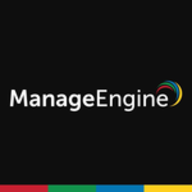

Amazon CloudWatch and ManageEngine Log360 are prominent contenders in the log management category. Amazon CloudWatch appears stronger in cloud integration due to its seamless AWS compatibility, while ManageEngine Log360 is distinguished by its robust security features, especially where detailed logging is crucial.
Features: Amazon CloudWatch offers real-time monitoring, deep AWS integration, and scalable cloud performance. ManageEngine Log360 provides extensive security incident detection, compliance reporting, and comprehensive logging capabilities.
Room for Improvement: Amazon CloudWatch could enhance log analytics, improve pricing structures, and offer better reporting capabilities. ManageEngine Log360 could work on simplifying its user interface, making navigation more intuitive, and optimizing performance efficiency.
Ease of Deployment and Customer Service: Amazon CloudWatch is easily deployable within AWS environments but receives mixed reviews on customer service. ManageEngine Log360 is recognized for comprehensive deployment support and reliable customer service.
Pricing and ROI: Amazon CloudWatch has high initial setup costs affecting ROI perception. ManageEngine Log360 is seen as more cost-effective with attractive pricing and a favorable feature set, offering better ROI for budget-conscious users.
Amazon CloudWatch offers cost-saving advantages by being an inbuilt solution that requires no separate setup or maintenance for monitoring tasks.
If unauthorized personnel attempt to add logs, the monitoring informs the administrator, enabling them to act promptly, leading to savings in both time and money for the company.
While using their cloud and cloud resources, if you have an issue with CloudWatch, you must pay additional monthly fees to get time from dedicated tech support.
In recent years, due to business expansion, knowledge levels among support engineers seem to vary.
I would rate their technical support as nine out of ten.
Amazon CloudWatch's scalability is managed by AWS.
The technical support from ManageEngine is very good.
I sometimes notice slowness when Amazon CloudWatch agents are installed on machines with less capacity, causing me to use other monitoring tools.
When using third-party dashboards such as Kibana or Grafana and other visualization tools, there should be a way to feed CloudWatch's data and logging capabilities into these visualization tools.
Amazon CloudWatch charges extra for custom metrics, which is a significant disadvantage.
Maybe Amazon Web Services can improve by providing a library for CloudWatch with some useful features.
Log360 currently cannot gather information from Intune logs or cloud-integrated systems.
Overall, the pricing of Amazon CloudWatch is very expensive.
Amazon CloudWatch charges more for custom metrics as well as for changes in the timeline.
The price is suitable from a perspective of different pricing options.
Being an inbuilt solution from AWS, it saves time on installation, setup, and maintenance.
I like its filtering capability and its ability to give the cyber engine insights.
The best features of Amazon CloudWatch need to improve visibility into the network because when using hundreds of network resources such as transit gateway, VPNs, routers, route tables, and firewalls, it does not give many details in a structured manner.
All mandatory regulatory compliance reports are available with the integrated system, and companies can easily customize reports without coding to meet their policy or reporting requirements.
| Product | Market Share (%) |
|---|---|
| Amazon CloudWatch | 2.1% |
| ManageEngine Log360 | 1.2% |
| Other | 96.7% |


| Company Size | Count |
|---|---|
| Small Business | 17 |
| Midsize Enterprise | 9 |
| Large Enterprise | 24 |
| Company Size | Count |
|---|---|
| Small Business | 13 |
| Midsize Enterprise | 2 |
| Large Enterprise | 1 |
Amazon CloudWatch integrates seamlessly with AWS, providing real-time monitoring and alerting features. Its interface supports task automation, enhancing troubleshooting and analytics capabilities, while offering strong security and scalability at a cost-effective rate.
Amazon CloudWatch is an impactful platform for monitoring AWS resources and managing application performance. It simplifies infrastructure performance monitoring by providing comprehensive analytics capabilities, including application insights and event scheduling. Users appreciate CloudWatch for its detailed metrics, dashboards, and support in issuing alerts to detect anomalies. It efficiently tracks performance, optimizes resource utilization, and ensures service availability. CloudWatch is recognized for its robust alerting features and integration with other AWS services, further supporting its resource monitoring capabilities. However, there is room for improvement in dashboard customization, log streaming speed, and integration with non-AWS services. Enhancements in API integration, machine learning features, and support for third-party tools are also desired.
What features does Amazon CloudWatch offer?Industries implementing Amazon CloudWatch often focus on optimizing IT infrastructure. Companies in sectors like finance and e-commerce rely on its monitoring and alerting capabilities to ensure service uptime and performance. The platform's automation and analytics features empower teams to proactively manage performance and detect potential issues promptly.
Log360 is your one-stop solution for all log management and network security challenges. It is an integrated solution that combines EventLog Analyzer and ADAudit Plus into a single console to help you manage your Active Directory auditing and network security easily.
We monitor all Log Management reviews to prevent fraudulent reviews and keep review quality high. We do not post reviews by company employees or direct competitors. We validate each review for authenticity via cross-reference with LinkedIn, and personal follow-up with the reviewer when necessary.